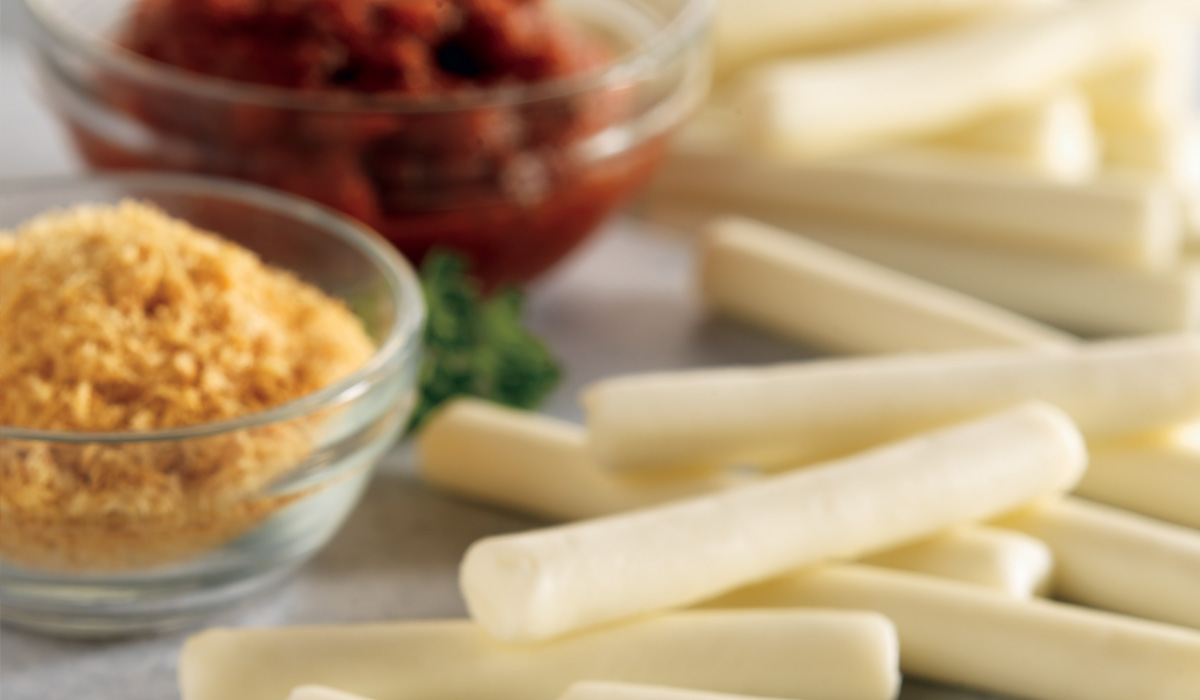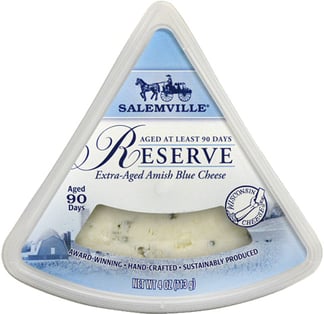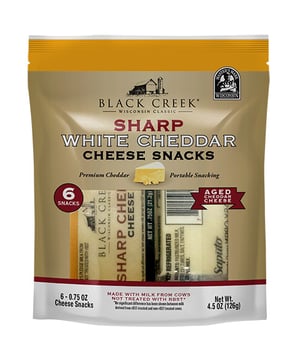
A Little Bite of Perfection
Snacks “get real” when fall arrives. Work ramps up as summer vacations fade, the kids head back to school and restart extracurricular activities, and even leisure time becomes more demanding. While the demand for snacks increases, so too do expectations of what those snacks will deliver. The snacks best-suited for high-activity lifestyles must provide extra energy, bigger flavor, and grab-and-go convenience. Think power snacks.
Snacks may feel like impulse consumption, but they’re big business. Estimates from multiple sources put annual global snack sales at around $100 billion, with roughly half of those sales occurring in the United States alone. According to “Snacking Motivations and Attitudes - US - January 2019,” a report from global market research firm Mintel, nearly all Americans snack at least once a day, in fact—with the average consumer enjoying 2.5 snacks daily.
Chicago consumer research firm SPINS found that “fresh” snacks account for about 15% of Americans’ annual snack spending. Per Mintel, in its 2019 “The Future Of ‘Fresh’” report, consumers define “freshness” as products that are “clean label, free of additives/preservatives” and “either refrigerated or found in the produce section.”
According to SPINS and Mintel, shoppers look to the perimeter of the store for “fresh” snacks. Almost half of shoppers “regularly buy the same items from the store perimeter,” while a third seek “new foods in outer store edges.” The same survey noted that one quarter of consumers point to the store perimeter as the source of their impulse buys, and sales in that part of the supermarket are growing at more than double the rate of center-store sales. SPINS expects that figure to climb 8% year over year. Notably, cheese is a component of what SPINS found to be the biggest retail food sales category — namely, refrigerated snack kits.
Mid-Day Bump
Few recent food and health trends have been bigger than protein. Although most Americans get sufficient protein in their diet, half cite it as the ingredient they most actively seek in a snack, per Mintel’s May 2019 “US Plant-Based Proteins Market Report.” As a high-protein snack, cheese not only delivers an increased sense of satiety (taking longer to digest than simple carbohydrates) but also helps control hunger and reduce the next meal’s caloric intake.
Conveniently portioned and packaged cheese formats, such as string cheese or cheese shapes (sticks, cubes or stars, for example), can be the perfect snack on their own or in snack packs accompanying crackers, fresh or dried fruit, meats, nuts, olives, and even chocolate (so-called “hybrid” options). Other highly snackable formats include cheese crisps or crispy cheese bars, cheese-filled pretzels, mini cheese and meat wraps, and heat-and-eat coated cheese shapes.
Manufacturers have also developed snack kits that capitalize on global flavor trends and may conceivably function as meal substitutes for lighter appetites. Hormel Food Corp.’s Natural Choice’s line, which pairs Chipotle chicken with queso quesadilla cheese and flax seed corn chips or Mediterranean-style chicken with bruschetta Jack cheese and garlic-herb pita chips, are just two examples.
According to Mintel’s “The Future of Cheese: 2019” report, snacking innovation in the U.S. and Europe is predominantly focused on natural cheeses. The report notes that U.S. consumers are most likely to snack on hard and semi-hard cheeses (56%), soft and semi-soft cheeses (22%), and processed cheese (20%). Only 3% favor fresh cheeses (such as burrata or fresh mozzarella) and cream cheese.
Formats for cheese in fresh mixed snack packs — snack packs in which cheese is a main component supported by other products or part of a group of items accompanying a host product — are undeniably popular. According to the research group IRI’s “2018 State of the Snack Food Industry” report, sales of such refrigerated groupings rose by 13% last year. The report singled out one snack featuring salami, provolone cheese, and breadsticks and another that provides pretzels as an accompaniment to organic Cheddar cheese cubes.
Cheese doesn’t have to come in simple, single-portioned sticks or cubes either. Some snacks offer cheese cut into other shapes, such as stars, or provide cheese as a dip or spread. Spreadable cheeses often are infused with flavorings ranging from fruit and herbs or spices to alcoholic beverage reductions (such as ales, stouts, red wine, or port). Such exotic, upscale flavor combinations give developers of fresh cheese snacks ample opportunity to engage with today’s more adventurous consumers.
Delightful Drop-Ins
Not surprisingly, string and other small-format cheese products — the little wedges, circles, bars, and other fun shapes tailor-made for kids’ lunchboxes — rank among the most popular cheese snacks, with recent variations pushing the format to new levels of interest and sales.
String cheese, along with nuts, was voted the No. 1 favorite snack in a survey by SnackNation, a healthy snacking website for consumers. Cheese’s high levels of calcium and protein — two ingredients low-energy consumers crave — account for its popularity. Cheese is also a good source of vitamin D, a nutrient that health experts estimate as many as three in four Americans aren’t getting in sufficient amounts.
The marketplace is rich in varieties and flavors — Saputo Cheese USA Inc.’s Montchevre® Goat’s Milk Cheddar Cheese Sticks, Black Creek® Sharp White Cheddar Cheese Snacks, and
 Salemville® Blue Cheese wedges, among them — that cater to this interest. These add inviting twists to the growing ranks of pepper Jack, Swiss, cheddar and smoked cheeses that now bolster what used to be a straightforward (classic mozzarella and Colby Jack cheese sticks) category.
Salemville® Blue Cheese wedges, among them — that cater to this interest. These add inviting twists to the growing ranks of pepper Jack, Swiss, cheddar and smoked cheeses that now bolster what used to be a straightforward (classic mozzarella and Colby Jack cheese sticks) category.
One of the biggest trends in cheese snacks has been the rapid growth of crispy cheese offerings. These 100% natural cheese snacks are made by baking or dehydrating cheese to remove nearly all water, and most free oil, content. The result is a crispy, crunchy pure (or flavored) cheese bite with a long shelf life and concentrated flavor.
Available as flat “chips” or round puffs, crispy cheese products have proved immensely popular among consumers craving the flavorful crunch of a chip in a clean-label, often single-ingredient format. Better still, many of these crunchy cheese snacks are low- or zero-carb, thereby appealing to paleo and low-carb dieters and to those seeking substitutes for grain-based crunchy snacks that are grain- (and therefore, gluten-) free.
As a concentrated source of energy and nutrients, cheese is uniquely positioned to be the go-to power snack for busy eaters. Cheese delivers full flavor with every bite, and by providing twice the energy in half the size of many other snack ingredients, it’s easy to carry — and leaves a smaller carbon footprint too.
Wrap It Up
 As product manufacturers focus on cheese for inspirational snacks that attract consumers seeking fresh, convenient, and better-for-you eating occasions, they are keenly aware that more than a third (35%) of consumers have said reducing packaging waste is important to them (per Mintel’s “The Future of Cheese: 2019” report). Yet plastic is by far the material of choice for packaging, as it best ensures product quality and shelf life. Mintel also found that plastic packaging accounted for 87% of all cheese product launch packaging, with more than 95% of all hard and semi-hard cheese launches relying on it to seal in freshness and flavor.
As product manufacturers focus on cheese for inspirational snacks that attract consumers seeking fresh, convenient, and better-for-you eating occasions, they are keenly aware that more than a third (35%) of consumers have said reducing packaging waste is important to them (per Mintel’s “The Future of Cheese: 2019” report). Yet plastic is by far the material of choice for packaging, as it best ensures product quality and shelf life. Mintel also found that plastic packaging accounted for 87% of all cheese product launch packaging, with more than 95% of all hard and semi-hard cheese launches relying on it to seal in freshness and flavor.
With such growing consumer — and industry — concerns over plastic waste, manufacturers are looking at new packaging innovations that can satisfy market demand for reduced plastic usage without compromising quality. Packaging is already being streamlined and minimized, but several years ago, researchers in Spain and Portugal were the first to create a bioplastic from whey, a byproduct of the cheese-making process. The plastic, a polyhydroxybutyrate (PHB) film dubbed “Wheypack,” was made by subjecting whey to a microbial fermentation and is uniquely suitable for wrapping dairy products.
Subscribe to our blog
Posts by Topic
- CPG Manufacturer (12)
- Retail (12)
- Global (9)
- Packaging (8)
- cheddar cheese (8)
- Blue Cheese (6)
- Transparency (6)
- Consumer Trends & Insights (5)
- Feta Cheese (5)
- Frozen (5)
- Lunch (5)
- National (5)
- Research & Development (5)
- Snack (5)
- parmesan cheese (5)
- protein (5)
- Better-for-You (4)
- Cheese Cubes (4)
- Clean/Free-From (4)
- Condiments (4)
- Dinner (4)
- Gen Z (4)
- Goat Cheese (Chèvre) (4)
- Herbs & Spices (4)
- Keto (4)
- Milk (4)
- Millennials (4)
- Peppers (4)
- Ricotta Cheese (4)
- hard cheese (4)
- Blend (3)
- Breakfast (3)
- Consumer (3)
- Convenience (3)
- Desserts (3)
- Dips & Sauces (3)
- Food & Beverage Trends & Insights (3)
- Fresh Mozzarella Cheese (3)
- Fruit (3)
- Gen X (3)
- Great Midwest (3)
- Health & Wellness Trends & Insights (3)
- Ingredients (3)
- Meal Kit (3)
- Montchevre (3)
- Mozzarella Cheese (3)
- Nutrition (3)
- Pizza (3)
- Retail Trends & Insights (3)
- Salt (3)
- Snacks (3)
- Social Media (3)
- Specialty Cheese (3)
- Spirits (3)
- Stella (3)
- String Cheese (3)
- Supply Chain (3)
- Varieties (3)
- Wine (3)
- vegetables (3)
- American Cheese Society (2)
- Applications (2)
- Asiago Cheese (2)
- Baby Boomers (2)
- Beer (2)
- COVID-19 (2)
- Flavors & Ingredients Trends & Insights (2)
- Fontinella Cheese (2)
- Generational Marketing (2)
- Grab-and-Go (2)
- Main Dishes (2)
- Mobile (2)
- Organic (2)
- Organic & Non-GMO (2)
- Pairings (2)
- Premium Mozzarella Cheese (2)
- Salemville (2)
- Silent Generation (2)
- Soft & Fresh Cheese (2)
- Spreadable Cheese (2)
- Toppers (2)
- Vegan & Vegetarian (2)
- Vegetarian (2)
- goat’s milk (2)
- marketing & communications (2)
- process (2)
- romano cheese (2)
- sheep’s milk (2)
- traditional mozzarella cheese (2)
- All-Natural (1)
- Artisan Cheese (1)
- Beverages (1)
- Black Creek (1)
- Breads (1)
- Brie Cheese (1)
- Certification & Education (1)
- Certified Cheese Professional (CCP) (1)
- Chain (1)
- Cheese Crumbles (1)
- Cheese Sticks (1)
- Cheesemakers (1)
- Cheesemonger (1)
- Clean (1)
- Colby Cheese (1)
- Cost Management (1)
- Craft (1)
- Cream (1)
- Cultures (1)
- Customer Experience (1)
- Deli (1)
- Delivery (1)
- Facilities Management (1)
- Farmstead Cheese (1)
- Flexitarian (1)
- Food Quality & Safety (1)
- Fresh Asiago Cheese (1)
- Frigo (1)
- Gorgonzola Cheese (1)
- Gouda Cheese (1)
- Heavy Cream (1)
- History (1)
- Ice Cream Mix (1)
- Iced Coffee (1)
- Independent (1)
- Insider (1)
- Joan of Arc (1)
- Leadership (1)
- Mold (1)
- Monterey Jack Cheese (1)
- Mozzarella Cheese Blend (1)
- On-the-Go (1)
- Operations (1)
- Packaging Trends & Insights (1)
- Pasta (1)
- Pasteurization (1)
- Pepper Jack Cheese (1)
- Pizzaiolo (1)
- Pizzeria (1)
- Plant-Based (1)
- Plant-Based and Plant-Forward (1)
- Processed (1)
- Recipes (1)
- Recruitment & Retention (1)
- Regional (1)
- Rennet (1)
- Salads & Soups (1)
- Sales & Profitability (1)
- Smoked (1)
- Snacking Trends & Insights (1)
- Success Stories (1)
- Sustainability & Responsible Sourcing (1)
- Swiss Cheese (1)
- Takeout (1)
- Techniques (1)
- Technology (1)
- Treasure Cave (1)
- Vegan (1)
- Whipped Topping (1)
- Whipping Cream (1)
- manufacturer (1)
- merchandising (1)
- pecorino romano cheese (1)
- plant-based & plant-forward (1)